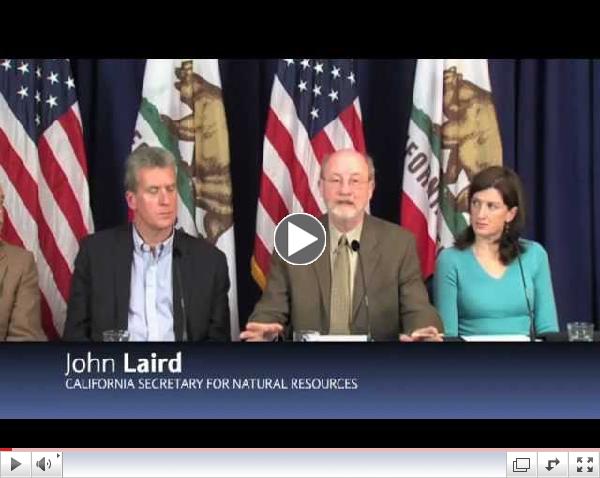Last month scientists, policy makers, resource managers, fishermen, and conservationists were among the over 300 people who gathered in Monterey to share their work and celebrate California's network of central coast marine protected areas or underwater parks. Five years after the network of 29 underwater parks was established between A�o Nuevo and Point Conception, the group was eager to hear the results of several baseline monitoring and ongoing research studies aimed at determining how these protected areas are performing.
While it's still too early to truly "grade" these underwater parks, Fred Keeley, who co-authored the 1999 Marine Life Protection Act, noted that "It's fair for people to feel encouraged and optimistic" as the early results from several research studies are promising. In kelp forests, many economically important fish species, including cabezon, lingcod, and black rockfish are more abundant inside the underwater parks than outside. In intertidal areas, species such as black abalone and owl limpets were found to be larger and more abundant in the marine protected areas. In addition, in one of the oldest underwater parks along California's coast, Point Lobos, monitoring results documented higher numbers and larger individuals of many economically important fishes compared to neighboring unprotected areas.
Local citizens are also getting involved in underwater parks. Several volunteer and citizen science groups shared the importance of community involvement in increasing stewardship, support, and compliance for marine protected areas; and in building transparency and public trust in the research and science. These programs include volunteer SCUBA divers who survey marine life with Reef Check, recreational and commercial fishermen who work with marine ecologists through the California Collaborative Fisheries Research Program, students who monitor tidepool communities through the LiMPETS program, and volunteers who track human uses in marine protected areas, known as the MPA Watch program.
It's clear that Californians care about underwater parks and are interested in the continued protection of our marine ecosystems. This support became even more evident when on the last day of a presentation packed 3-day symposium, the room was still full of participants wanting to absorb every last morsel of information!
Also noteworthy was the presence of representatives from other parts of California, as well as other regions of western North America. The implementation of our statewide network is truly viewed as a pioneering and extremely promising initiative.
If you weren't able to attend, the Symposium is available in video segments at www.oceanspaces.org. For a small taste of the video offerings, click on the link below to watch a short webcast with California Secretary for Natural Resources, John Laird, California Fish and Game Commission President, Mike Sutton, and others as they share the key findings:
 |
| Key findings from the first 5 years of MPA monitoring in the Central Coast |